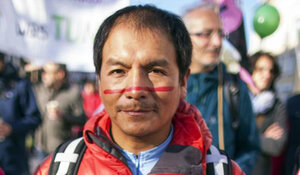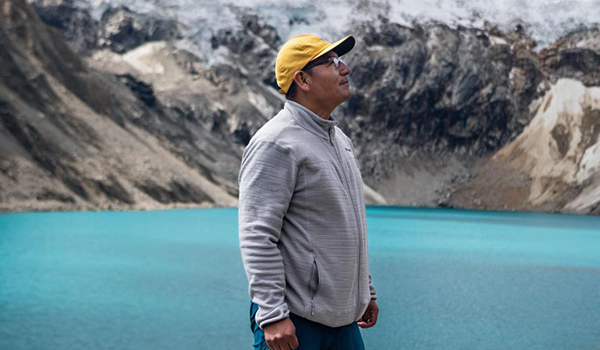More than 6,000 individuals and organizations, led by Greenpeace, filed the first Austrian climate lawsuit in 2020. The plaintiffs claimed that their rights were being violated by the preferential tax treatment of air travel over rail travel. The case was dismissed by the Supreme Court since it was ruled that the applicants weren't impacted in a way that's legally protected and that the tax rules didn't apply directly to them. But rather than a setback, this was a sign that the changes taking place around the world were finally reaching Austria. The case is part of a global trend in environmental litigation: climate lawsuits.
One goal, many fronts
As the COP28 - the most important international meeting convened under the United Nations Framework Convention on Climate Change (UNFCCC) – took place in Dubai at the beginning of December 2023, attention was (once again) focused on the progress made by the various 'parties' or signatory nations in addressing climate issues. In this sense, the efforts of environmental activists are having a moment, accompanying their usual forms of protest with legal processes in the courts, demanding more concrete actions from both governments and corporations to protect the environment from the effects of climate change. The aim is to bridge the gap between regulatory action and scientific advice on climate policy, especially as climate science is seen as complex. Nevertheless, the evidence can make a difference when it comes to exploiting legal loopholes and challenging legislation.
As of now, Austrian courts have seen six cases, while the Columbia Law School has identified approximately 2,539 cases being pursued globally. In some countries, both in the global North and South, climate litigation is relatively new. Due to limited legal structures, success rates in courts have been generally low. However, recent findings from the London School of Economics indicate a 58% success rate, with the United States being the most active in pursuing such cases. However, a few landmark cases have given some hope to this new legal landscape. In the Netherlands, the Supreme Court recognized the threat posed by climate change and the state's responsibility to act on climate emissions (2019), ordering the government to reduce them. Also in the Netherlands, an NGO and a group of activists sued the oil company Shell on the premise that its contributions to climate change violated its duty of care (under Dutch law) and human rights obligations. The court found in favor of the activists and Shell was instructed to make substantial emission reductions, but no monetary compensation was part of the decision.

Litigation is costly and the power imbalance between multi-million-dollar corporations and pressure groups is significant. Therefore, litigation has to be strategic. Climate litigation faces various challenges, including procedural hurdles, technical complexities, and jurisdictional issues, as seen in the dismissed Austrian lawsuits. Crucially, it highlights that the representation of vulnerable communities is essential in grasping the full scope of climate change impacts. However, vulnerable communities often face challenges in accessing the legal system, perpetuating inequalities that already exist in our societies. In Austria, children have been considered in this regard, as they are disproportionately affected by climate issues. In February this year, 12 children challenged the Climate Protection Act (Klimaschutzgesetz 2011) alleging that children’s rights were not guaranteed as well as their fundamental right to equality before the law. “We children and young people cannot stand idly by any longer while politicians are ruining our future. We are taking legal action because just like our parents we children have the right to a world in which we can live in security and happiness” (translated from German) stated Smilla, one of the plaintiffs. Even though there were some technical details involved, this challenge gained a lot of attention in the media for its clever strategy to address climate change.
Compensations for the disproportionally affected
A logical response to climate change legal actions would be compensation. A “collective loss-sharing scheme” was proposed by the Alliance of Small Island States in 1991 to compensate the most vulnerable small islands and low-lying coastal developing countries for damage caused by sea level rise. The proposal was not accepted at that time, but the issue was finally recognized in the COP19 in 2013 and included in the Paris Agreement (2015). Today, the term is also promoted by an important group called the Loss and Damage Collaboration, a network of organizations around the world that aims to promote dialogue, knowledge sharing and cooperation among different stakeholders, including governments, international organizations, academia and civil society. It also supports the Loss and Damage Fund, a UN financial mechanism adopted at COP27 last year, which aims to collect funds to pay developing countries for damages caused by global warming. However, their work does not stop there, as they also want to continue their efforts outside the UN, by continuing to advocate and research issues that go beyond the more common ideas of mitigation and adaptation to climate change. In addition, their efforts are also aimed at creating long-term change through policy changes.

“Loss and damage" therefore has the potential to trigger efforts to create complex "financial architectures" to compensate poorer nations and communities. One case that has the potential to set an important precedent in this regard is that of Peruvian Saúl Luciano Lliuya against the German energy company RWE, the largest single emitter of CO2 in Europe. Lliuya has been witnessing the effects of glacier melt and his village is in risk of floods. "For us in the valley the threat is extreme. We can’t just wait and see what will happen. It is clear to me that those causing global climate change also have to take on responsibility. These are international companies which change the climate by emitting greenhouse gases into the atmosphere", he claims. First of its kind, this lawsuit seeks to hold a major emitter responsible for funding urgently needed protective measures for those severely impacted by climate change risks, providing substantial financial resources to these Peruvian mountain communities.

A legally binding treaty, a solution?
Another interesting example is the Fossil Fuel Non-Proliferation Treaty, which, inspired by the Nuclear Non-Proliferation Treaty, seeks not just to ban but to stop the expansion of coal, oil and gas, and to accelerate international efforts to achieve a just energy transition. So far, the treaty has been endorsed by more than 100 cities and 10 countries, including a Pacific Island Alliance. Among the adopters, Colombia is the major producer of oil and gas and with the decision announced at the COP28 in early December 2023 by its president Gustavo Petro, he urged: “Here we are avoiding 'omnicide' on planet Earth. There is no other way, the rest are illusions. (…) Today we face an immense confrontation between fossil capital and human life. And we must choose a side. Any human being knows that we must choose life. I have no doubt which position to take: between fossil capital and life, we choose the side of life."
Strategic climate litigation operates as a multifaceted approach, employing various strategies to bring about systemic change. Engaging diverse stakeholders, forming collaborative alliances, and leveraging legal avenues constitute fundamental pillars in this endeavor. However, its essence lies in ensuring fair access to justice, especially for communities disproportionately affected by climate crises. This sphere has witnessed significant innovation, fostering novel strategies to address climate challenges creatively. Yet, success isn't solely measured by legal wins; it hinges on enforcing court decisions and implementing enduring, sustainable solutions. For strategic climate litigation to truly make a difference, it requires not just legal victories but sustained, meaningful changes that bolster resilience and adaptation in our evolving climate landscape. Every approach and effort, even a dismissal, counts (12 December 2023).

